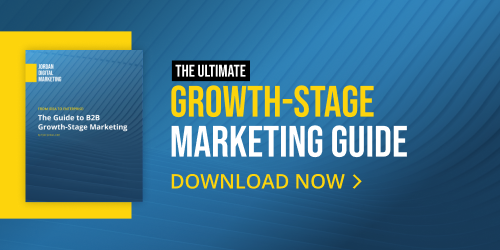Testing Personalized LinkedIn Ads: What’s Working (and What’s Next)
Advocates of Google’s old Smart Shopping and Local Shopping campaigns are dealing with a streamlined (read: downsized) set of options for advertising their products on Google. In 2023, you have two choices: Performance Max campaigns with a Google Merchant Center feed, or Standard Shopping campaigns.
In this post, we’ll do a comparison of the two campaign types, including pros and cons for each.
Performance Max vs. Standard Shopping Campaigns
From Google:
|
|
Performance Max campaigns |
Standard Shopping campaigns |
|
Where your ads appear |
Access most Google Ads channels, including:
Automatically access new inventory and formats as they become available without having to set up any new campaigns.
|
Access selected Google Ads channels:
|
|
Ad format |
Wide range of Google Ads formats, including:
|
Selected Google Ads formats:
|
|
Billing |
You'll only pay for the performance of your campaigns (for example, clicks or CPM).
|
You're charged using cost-per-click (CPC). You’re charged only when someone clicks an ad that leads to the landing page on your website or to the Google-hosted landing page for your local inventory. |
|
Bidding |
Automated strategies:
|
Manual strategies:
|
|
Ads are auto-generated based on assets provided by the advertiser in asset groups (for example, text, image, video) and in the Merchant Center feed. |
Ads are created based on assets provided in the Merchant Center feed. Additional creative assets (for example, text, image, video) are not available. |
|
|
Opted in automatically when a local products inventory feed is attached to the campaign |
By default, Shopping campaigns only show ads for products sold from your online website. Check the box “Enable ads for products sold in local stores” in the campaign settings to enable local inventory ads |
|
|
Other Features |
Additional automation features, including:
|
Additional customization features, including:
|
|
Campaign priority |
For the same product in the same account, Performance Max campaigns take priority over Standard Shopping and display remarketing campaigns. We recommend that you set a budget equal to the sum of those other campaigns to retain your overall spend. |
|
And more comparison data from StoreGrowers:
|
|
Performance Max |
Standard Shopping |
|
Placements |
Search Network, Display Network, YouTube, Gmail, Discovery & Maps |
Search Network |
|
Reach |
Very wide |
Limited |
|
Bid strategy |
Maximize Conversions or Maximize Conversion Value (with optional targets) |
|
|
Level of control |
Low |
Very high |
|
Conversion volume requirements |
Min 30 conversions / month |
None |
|
Campaign transparency |
Low |
High |
|
Optimization potential |
Medium |
Very high |
|
Remarketing included |
Yes |
No |
|
Impact on Search campaigns |
Yes |
None |
A Breakdown of Performance Max Campaigns
Performance Max campaigns use automation across bidding, budget optimization, audiences, creatives, attribution, and more.
This type of Google Shopping campaign is best for eCommerce advertisers who:
- Want to maximize conversion and reach beyond keyword-based Search campaigns
- Want to reach multiple channels with a single Shopping campaign
- Have very specific conversion and marketing goals
- Don’t care which channels their ads appear on
- Are okay with leaning into automation and giving up control
Performance Max Benefits
The automated nature of Performance Max saves time and effort while taking away manual control. Marketers used to having more levers to manipulate will have to figure out how much they trust Google’s machine learning to hit their goals. Beyond time savings, Performance Max does offer concrete benefits, including:
- The ability to reach more shoppers wherever they are to maximize conversions and revenue.
- Data-driven attribution that ensures campaign value and accurate predictions.
- The option to create different Asset Groups per campaign to separate + organize products by product type, theme, price point, etc. (Note: if you use multiple Asset Groups, we recommend each one targets different products from your feed so there is no overlap.)
Performance Max Limitations and Downsides
The lack of control is the biggest downside of Performance Max campaigns. Everything is automated; Google picks which ad type, assets, and messaging to send to each user.
This wouldn’t be so hard to swallow for advertisers if Google had more robust reporting. But despite some recent rollouts, advertisers have limited visibility into which ad types and variations are spending the most, how each is performing, which placements are being used, and how those placements are performing.
The other lack of control centers on targeting. Advertisers have no real targeting options with Performance Max, which uses ambiguous “audience signals” to find users most likely to convert. Since audience signals are so critical to targeting, we recommend you feed Performance Max campaigns your highest-quality and highest-value audiences for them to learn off of, otherwise they’ll be optimizing to convert the easiest (and likely least valuable) audiences.
One more big drawback is the potential for Performance Max to cannibalize regular search campaigns. This happens because Performance Max tends to show its ads over your search ads - giving Performance Max credit for conversions over even branded search campaigns.
We always recommend working with your Google rep to apply a list of negative keywords (which should always include your brand terms) to your Performance Max campaigns to prevent cannibalization. There is also an option to add account-wide negative keywords that would apply to Performance Max campaigns, though you should restrict those to any known irrelevant keywords or search terms that you know you don’t want your ads showing for.
Standard Shopping Campaigns
On the other end of the control spectrum, Standard Shopping campaigns are best for advertisers who want full control over their shopping campaigns.
Benefits of Standard Shopping
Along with affording you full control over your campaigns, Standard Shopping gives you the ability to add negative keywords at the campaign level. This will allow you to set up a structure to favor + prioritize the products that are most important or most valuable to you. It also allows you to keep from wasting money on showing ads to people who are searching for irrelevant/unrelated products or for searches you don’t want to show for (e.g. If you’re selling new shoes, you wouldn’t want to show up for searches for “free shoes” or “used shoes”).
Control over bids means you’re able to bid higher for your higher-value products. You also get more insights into how each product is performing and how your ads show to users.
Limitations of Standard Shopping
As you might expect, managing Standard Shopping campaigns is a lot more manual and less automated, which can get complicated and burdensome with large catalogs.
Wrap-up
At this point, your choice in shopping campaigns basically boils down to your priorities: do you want control at the cost of time and resources, or do you want to save time and trust Google to get the most out of your budget?
If you go with the former option, make sure you know which controls you plan to use and how much of a performance difference to expect. And make sure you’re at least testing Performance Max campaigns to get an idea of how they work, since Google is eventually going to move even further into the world of automation whether you like it or not.
We’re always here to chat if you have questions about the best shopping set-up for your brand; just drop us a line!

May 2, 2023 8:15:19 AM


-4.png?width=500&height=500&name=Regular%20Blog%20Hero%20(4)-4.png)
-Dec-29-2025-08-39-03-0239-PM.png?width=500&height=500&name=Regular%20Blog%20Hero%20(3)-Dec-29-2025-08-39-03-0239-PM.png)
-Dec-17-2025-09-01-13-5742-PM.png?width=500&height=500&name=Regular%20Blog%20Hero%20(2)-Dec-17-2025-09-01-13-5742-PM.png)
